

Cincinnati Bengals Prototype
1968 Prototype helmet
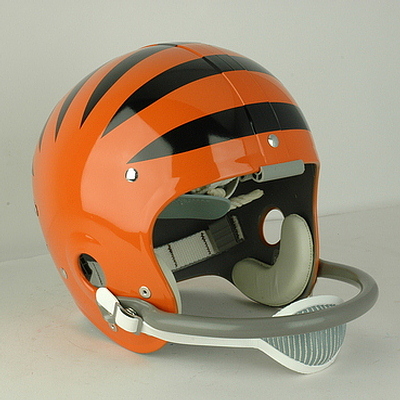 |
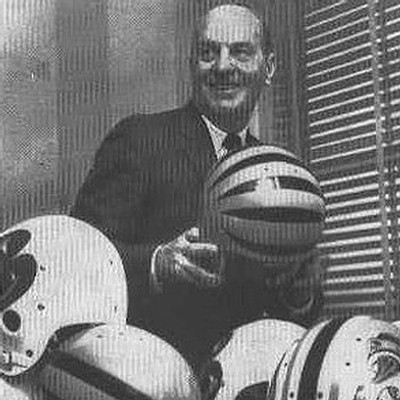 |
Anyone who knows the history
of football, especially the modern era of professional football, knows the
history of legendary coach Paul Brown. He is credited with introducing or
developing numerous innovations that literally catapulted the game into the
public consciousness and made the actual nuts and bolts of training and
on-the-field execution exacting. The history of Paul Brown is rooted in his
Massillon, Ohio boyhood where he learned to love football and see it as a
metaphor for many of life’s challenges, allowing him to develop his trademark
philosophies and principles. These principles incorporated a disciplined and
conservative approach to almost every aspect of the game. The Massillon
Washington High School football program became legendary, especially when Brown
took over the coaching duties from 1932 through the 1940 seasons, and much of
what he was and did can be traced to the influence of the Ohio city. Paul
Brown’s success, as evidenced by his Massillon Washington record of 88 – 8 – 2
with thirty-five consecutive victories, put the black and orange clad Tigers on
the national map.
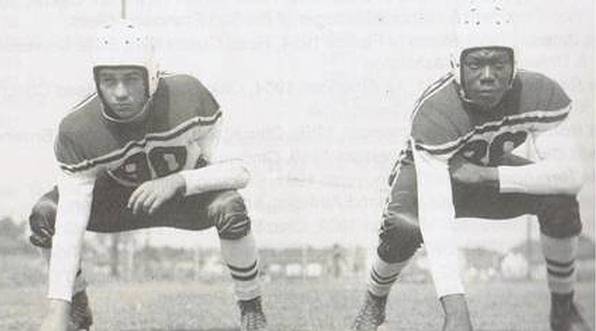 |
Paul Brown’s 1940 Massillon Washington HS team was well dressed in black and orange
Those Tigers teams that he both played and coached with certainly made an impression and when Brown became the founder as well as an owner, head coach, and what would now be termed the Director of Football Operations for the fledging Cincinnati Bengals of the American Football League prior to the 1968 season, he chose a uniform style that reflected those Massillon Washington High School Tigers. The Bengals colors were orange and black and in keeping with Browns conservative bent, the uniform style was streamlined and muted.
An Associated
Press photograph from January 03, 1968 showed Brown examining a
number of proposed helmet styles for the new Bengals team. The white
helmet in the foreground of the photo showed a tiger logo placed on
the side of a white shell with white and orange flanking stripes and
what appeared to be a wider black center stripe, a look similar to
Massillon teams through the 1950’s and ‘60’s. Former Kent State
University and Massillon Washington head coach Leo Strang has been
credited with creating and using the first plastic decals applied to
helmets and his initial display at Massillon was of course, that of
a tiger.
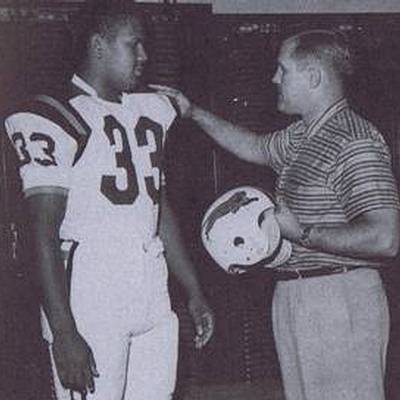 |
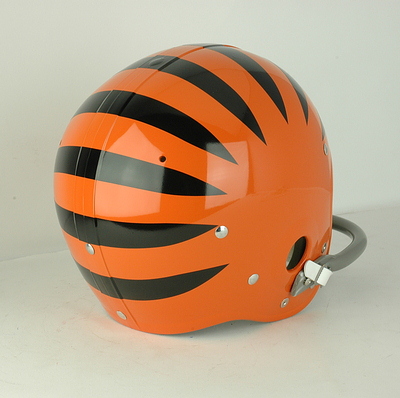 |
Thus Paul Brown’s former high school team had enhanced their reputation with this uniform innovation that Strang introduced after taking over the Massillon program in 1957.
The Bengals appeared of course in the orange shell that Brown had chosen, with the word “Bengals” on each side and they wore this through the 1980 season. The relatively unadorned helmet and uniform jersey that eschewed sleeve or shoulder numerals was another reflection of Brown’s understated and all-business style. Many football fans and especially Bengals fans were no doubt shocked by the radical departure demonstrated by the new Bengals uniforms, unveiled for the 1981 season. Perhaps Paul Brown or others in the organization became tired of hearing that “the Bengals still look too much like the Browns,” a comment made since the franchise had been formed. The answer to “Who was responsible for the great helmet design?” is rather easy to answer. Graphic designer Bruce Claypool, in a revealing 2010 interview with Uni Watch guru Paul Lukas, indicated that he was very much responsible for the change to the Bengals striped helmet design. The more important question for many may be “What was the stimulus that brought Brown to NFL Properties with a request to make a change?” We may never know with certainty but as Claypool described it, “The team came to (NFL) Properties…Dave Boss (of NFL Properties) came to me and asked if I’d like to work this and I said ‘Great.’” While the stripes were to most, an obvious design choice for a tiger-related helmet, Claypool wanted to mimic the concept displayed by the Rams helmets that also worked the design in conjunction with the helmet shape. After approximately six months and a number of possible production models, the striking striped helmet was completed and of course, an immediate hit when revealed for the 1981 season.
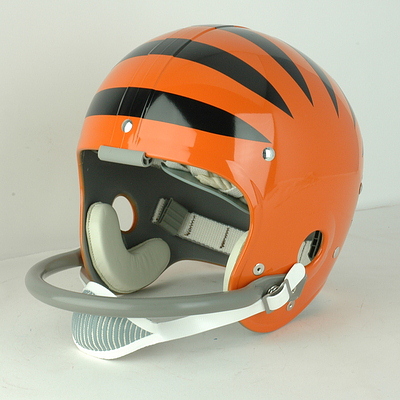 |
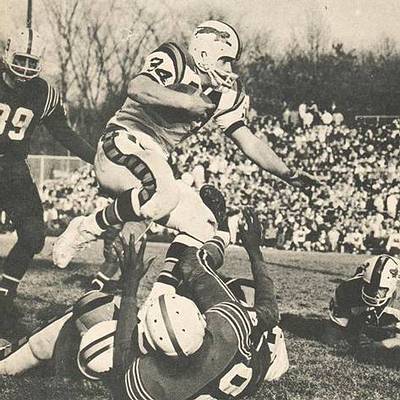 |
However, another glance at the January 1968 press photo of Coach Brown that displayed a number of helmet prototypes shows him holding…yes, a tiger striped helmet! It’s obvious that the stripe design does not demonstrate an attempt to “work with the shape of the helmet” as Claypool did, but it is clearly a similarly striped helmet, comparable in concept, to the finished 1981 model. Lukas made everyone’s most blatantly “this needs to be asked” inquiry of Mr. Claypool: “Were you aware of that photo, and did it help inspire your design?” Claypool stated upon viewing the photo, “Oh! Interesting. I’ve never seen-I don’t recall seeing this photo.” Thus the original 1968 Bengals tiger-striped prototype helmet was one of a number of designs requested by Paul Brown, by Brown in concert with the advertising and marketing department of the National Football League, or one of a number of submitted designs from artists or helmet company designers that were asked to present their ideas. Bruce Claypool is the individual “officially” credited with designing the beautiful Bengals striped helmet still in use today, but the original striped prototype, one of many, has origins that will for the moment, remain a bit of a mystery.